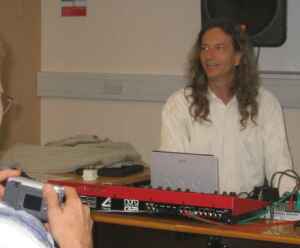

Interestingly some of the 81z's close relatives like the DX100 DX21 skipped the extra waves but retained the rest of the architecture. It had 4 operators but with different wave options as well as a different envelope design. The TX81z which came out a few years after the DX was an interesting parameter incompatible sidestep.

So essentially you get a failure modulating through zero at a certain point and you get a waveform that's fails achieving fm's expected generation of additional frequenciesĪs for other waveforms on Yamaha gear. At a point the modulator amplitiude will make the carrier hit zero and want to keep going but it can't unless you have TZFM implemented. You most certainly can do more conservative amounts of FM. I'm not sure I agree with the non TZ can't part.

So that brings up the potential of the CV-able VCOs out there that do PM. Yes, many sources explain what Yamaha was doing digitally as Phase Modulation. Also dx etc really uses pm, which makes the index independent of note and modulation more sensible in general. >Tzfm can do digital-style fm, non tz simply can't. Even so, I would imagine incorporating it with some of the digital PM modules (particularly the PDO) would lead to some very interesting results. The Wiard/Malleko Uncle oscillator has a phase modulation input, although since it's entirely analogue I think you'd have a very difficult time getting it all to work in the exacting ways that precise PM demands. The Cyclebox also allows for messing with phases and ratios in a 2-operator fashion, although without the locked ratios of the ModCan. I haven't personally used the PDO yet so I can't speak to its efficacy, but it's on my short list of modules to get due to those features. This promotes more varied patching but also means that getting closer to those "ideal" ratios requires some self and external patching - apparently WMD is planning a VCA matrix expansion at some point which may contain all that patching into a module. The WMD PDO also focuses on phase modulation, but with 4 operators and a more open architecture without fixed ratios. In those ways it's sort of a 2-operator monophonic DX7 in a small package, although with others tricks thrown in as well. The ModCan FMVDO is a prime example, since its focus is on fixed phase-locked ratios. They're very similar in execution, but there are only a select few oscillators in euro that allow for tinkering with phase. The DX7 is colloquially referred to as an FM synthesizer but the technology inside it was really phase modulation. One of the big tricks to getting DX7-ish tones is phase locking between modulator and carrier waveforms across the spectrum.


 0 kommentar(er)
0 kommentar(er)
